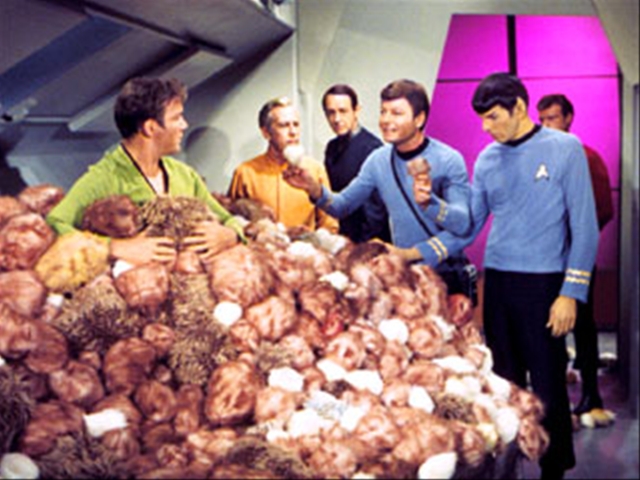Connie and Carla
Posted on May 18, 2009 at 8:00 am
B+| Lowest Recommended Age: | Mature High Schooler |
| MPAA Rating: | Rated PG-13 for thematic elements, sexual humor and drug references |
| Profanity: | Some strong language and double entendres |
| Alcohol/ Drugs: | Characters drink to respond to stress, scenes in bar |
| Violence/ Scariness: | Character killed, mostly comic violence |
| Diversity Issues: | A theme of the movie |
| Date Released to Theaters: | 2004 |
| Date Released to DVD: | 2005 |
| Amazon.com ASIN: | B00005JN1K |
Nia Vardalos captivated audiences with the unstoppably successful My Big Fat Greek Wedding and her next film opens up in a few weeks. So it is a good time to take a look at her last film, which never got the audience it deserved. It is very entertaining, if less broadly appealing than her blockbuster debut. What made her first film a hit was its fresh and unassuming presentation of a universal theme — families drive everyone a little crazy. This one is a more traditional farce with the always-reliable gender-switching theme. It worked for Shakespeare and it worked for “Charlie’s Aunt,” “Some Like it Hot,” and “Tootsie,” and if this movie doesn’t hit that level, it avoids the mistakes of flops like “Sorority Boys” and “Juwanna Mann.”
Vardalos and Toni Collette (“The Sixth Sense” and “Muriel’s Wedding”) play best friends who dream of starring in dinner theater productions of Broadway shows. Instead, they are waitresses at an O’Hare airport restaurant who get to belt out tunes to stranded travellers in between taking orders. One night bad guys shoot their boss over a drug deal and, when they see Connie and Carla watching, they try to kill them, too. So Connie and Carla have got fo find a place to hide. Cue “Born to be Wild” and point the station wagon to Los Angeles.
And then before you can say “Queer Eye on the Girls from the Heartland,” Connie and Carla disguise themselves as drag queens and get a job performing in a nightclub. And they are wildly successful because they finally found an audience that appreciates Broadway show tunes! Connie starts to fall for the handsome brother (David Duchovney) of one of the drag queens, Carla misses her boyfriend, and those bad guys are still trying to find them….but these are girls who know how to deliver a happy ending.
This is a bright and colorful door-slamming farce directed by Michael Lembeck, whose experience with “Friends” keeps the pace so brisk that there isn’t much time to notice the parts that don’t work. The plot is nothing new — Lucy and Ethel would be right at home — but there are some good lines given maximum punch by a strong cast.
Duchovney’s low-key charm works well in the midst of all of the over-the-top emoting, but it is a shame that the plot requires him to be so squeamish about his brother’s lifestyle. The movie’s biggest weakness is its attempt to be just too, too good to the last drop, sprinkling self-esteem over every person who comes on screen like, well, fairy dust. This movie is going to make sure you get the message. Like the two main characters, it throws everything at you it can think of, from shameless power ballads to a real old-time movie star. The song and dance routines really are a hoot, delivered with such affectionate sincerity that I dare you not to be entertained. Yet what it does best is what it does most quietly, with some understated humor about how everyone, even a hitman for the mob, is just one showtune away from discovering the transcendent power of dinner theater.
Parents should know that many of the characters in this movie are drag queens, although as is typical in movies of this kind, they are portrayed as non-sexual. Parents should also know that characters use some strong language and there are some double entrendre sexual references and crude jokes involving tampons and a “sit on my face” insult. Characters respond to a stressful situation by deciding to get drunk and much of the action takes place in a bar. A character is a drug dealer and the response to accidental use of cocaine is portrayed as humorous. A character is a hitman and there is one murder (off camera). There are fights, mostly comic. A strength of the movie is that prejudice against drag queens and anyone who is different is an important theme.
Many families may find this movie a good starting point for discussions of how we know who we are and how we treat those who are different. They might want to talk about why it is easier for the drag queens to feel good about the way they look than it is for the women that Connie and Carla see.
Families who enjoy this movie will also enjoy some of the other classic cross-dressing comedies including Tootsie and Some Like It Hot
and drag queen comedies like The Birdcage
, Victor/Victoria
, The Adventures of Priscilla Queen of the Desert
, Outrageous!
, and To Wong Foo Thanks for Everything Julie Newmar
(all with some mature material).


